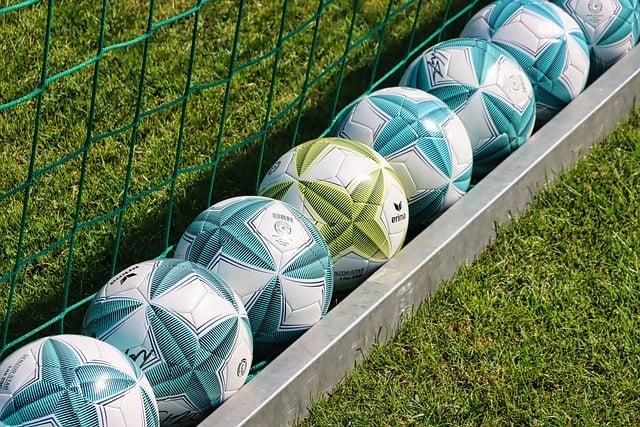In the intricate symphony of human movement, core strength plays the role of an unsung hero, subtly orchestrating the harmony between posture/” title=”Align Your Body: Effective Cardio for Posture”>balance and power. Imagine it as the steadfast conductor, guiding the body’s ensemble of muscles to perform with precision and grace. Often overshadowed by the more visible musculature of the arms and legs, the core is the central powerhouse that fuels almost every action we take, from the mundane to the magnificent. This article delves into the vital importance of core strength, exploring how it underpins not just athletic prowess, but our overall physical performance. As we journey through the nuances of core engagement, prepare to uncover how this central pillar of strength is key to unlocking your body’s full potential.
Building the Foundation Understanding Core Muscles and Their Role in Movement
To truly appreciate the significance of core strength in enhancing physical performance, it’s crucial to delve into the intricate network of muscles that form our body’s powerhouse. The core is not just about the coveted six-pack abs; it encompasses a complex group of muscles that include the transverse abdominis, rectus abdominis, internal and external obliques, and the erector spinae. These muscles work in harmony to stabilize the spine, facilitate movement, and maintain balance, acting as the central link in a chain connecting the upper and lower body.
Understanding the core’s role involves recognizing its contribution to various movements and functions. Here are some of the key roles played by core muscles:
- Stability: A strong core provides the necessary stability for the spine, reducing the risk of injury during physical activities.
- Balance: Core strength enhances balance and coordination, which are vital for activities ranging from walking to complex athletic movements.
- Posture: A well-conditioned core supports good posture, which can alleviate stress on the spine and prevent back pain.
- Power Transfer: It serves as a conduit for transferring power between the upper and lower body, crucial for activities like running, jumping, and lifting.
By fortifying these muscles, individuals can unlock new levels of physical performance, paving the way for improved efficiency and effectiveness in both daily activities and athletic pursuits.

From Stability to Agility How Core Strength Enhances Athletic Performance
Transitioning from stability to agility in athletic performance hinges significantly on the development of core strength. A robust core acts as the central powerhouse, facilitating efficient movement and balance across various sports and physical activities. By enhancing the strength of the muscles in the abdomen, lower back, hips, and pelvis, athletes can experience improved posture, increased stability, and a greater range of motion. This not only contributes to more effective and controlled movements but also reduces the risk of injuries, allowing for longer and more consistent training sessions.
- Enhanced balance and coordination: A strong core provides the foundation for better body control, allowing athletes to maintain balance even in dynamic and challenging environments.
- Improved power and speed: Core muscles are integral in generating the force needed for explosive movements, contributing to faster sprints and more powerful jumps.
- Efficient energy transfer: With a stable core, the body can efficiently transfer energy from the lower to the upper body, optimizing performance in sports that require full-body coordination.

Core Training Techniques Effective Exercises for a Stronger Midsection
When it comes to enhancing your physical performance, focusing on your core is essential. This powerhouse of muscles not only stabilizes your body but also aids in improving balance and coordination. To carve out a stronger midsection, incorporate a variety of effective exercises that target different areas of your core. Here are some of the most impactful techniques:
- Planks: A fundamental exercise that engages multiple muscle groups, planks help in building endurance and strength. Experiment with side planks and reverse planks to target different angles.
- Russian Twists: This dynamic movement focuses on the obliques, enhancing rotational strength and stability. Use a medicine ball for added resistance.
- Bicycle Crunches: Known for activating the rectus abdominis and obliques, bicycle crunches are perfect for those seeking a challenging core workout.
- Leg Raises: A highly effective exercise for the lower abdominal muscles, leg raises can be performed on the floor or using a captain’s chair for increased difficulty.
Incorporating these exercises into your routine will not only help sculpt your midsection but also contribute to better posture and reduced risk of injuries. Remember, consistency is key in achieving a robust core that supports all facets of your physical activities.
Beyond Aesthetics Long-term Benefits of a Well-Developed Core
While the allure of a chiseled midsection might initially draw attention to core workouts, the true value lies in the profound, long-term benefits they offer. A robust core is the foundation for improved stability and balance, which are essential for both everyday activities and athletic endeavors. It enhances the body’s ability to perform complex movements efficiently, reducing the risk of injury and ensuring a greater range of motion. Furthermore, a well-developed core contributes to better posture, which can alleviate chronic back pain and improve overall body alignment.
- Enhanced Stability: A strong core stabilizes the body, allowing for more controlled and precise movements.
- Injury Prevention: By supporting the spine and pelvis, a solid core reduces the risk of injuries, especially in high-impact sports.
- Improved Posture: Core strength helps maintain proper posture, which can prevent back pain and improve breathing.
- Efficient Movement: Core muscles act as a central link in the kinetic chain, facilitating more effective and powerful movements.
Ultimately, investing in core strength transcends aesthetic appeal, offering a spectrum of functional advantages that contribute to a healthier, more resilient body.
